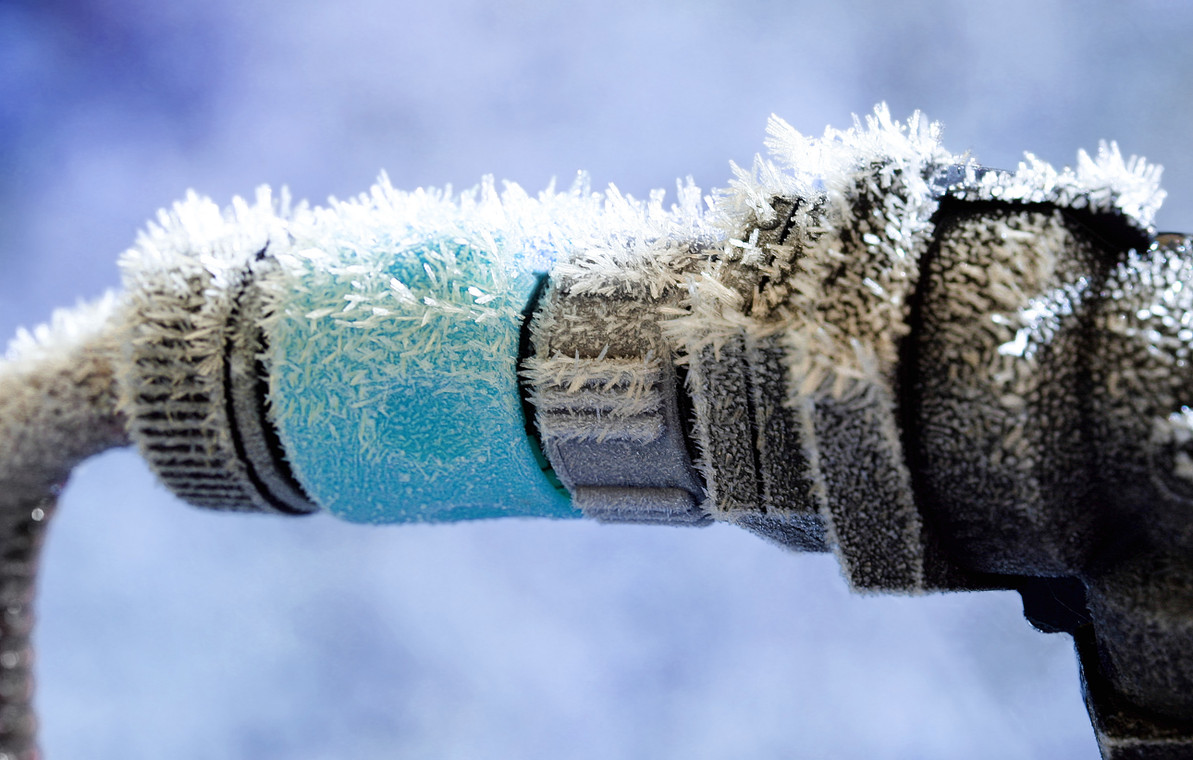Truckmount Hibernation
With winter coming up quick it’s good idea to prepare for those first freezing temperatures creeping in. They will sneak up on you and before you know it you’ll have a busted fitting or blown pump seals slowing you down during an already slow season.
For those of us in the San Francisco Bay Area and other regions that don’t see snow on the ground it’s easy to disregard the weather reports, and more importantly the temperature forecast. The truth is that all you need is one night with freezing temperatures and all of a sudden you have thousands of dollars in repairs from a cracked heat exchanger or blown pump head.
There are a few strategies for safeguarding against freeze damage:
The Ideal Situation
The best possible situation to ensure the health of your machine, tools and chemicals is to park your van in a heated garage. This is ideal because of its convenience and reliability. But, for many this is not possible so the following methods are for you.
Tucking In your Truckmount
The simplest thing you can do is add a layer of insulation around your truckmount by throwing a thick blanket around it. This works by trapping the heat that your truckmount has produced throughout the day. This is a very moderate tactic and furthermore it is a good idea to implement additional tactics. If you are in an area that has consistent low temperatures throughout the cold months of the year, installing insulation inside your van may be a good idea. There are many options for this that range from custom made kits to spray in foam to DIY cut and install. Whichever method you choose will help keep the temperature differential in your favor.
Turn Up the Heat
An effective way to maintain warm temperatures within your work van is to implement a couple electric space heaters; one on either side of the truckmount would suffice. Be sure to use an appropriate gauge extension cord to withstand the amperage that the heaters require, and also check the surrounding areas for any flammable materials. Don’t forget to gather all tools, chemicals and hoses as close as possible to the heat source to avoid any damage to those as well. As a measure to give you peace of mind you can utilize a remote thermostat that will alert you if temperatures drop too close to freezing; you can pick one of these up at any big box store.
Hibernation
If you expect to not be using your equipment for days at a time then the following procedures for winterizing should be used. Winterizing your equipment is the act of displacing all the water within your machine’s systems with antifreeze. We recommend using eco-friendly antifreeze as it provides adequate freeze guard, is easily removed from the system and it is safer for people and pets than conventional automotive antifreeze. For most machines the general process for winterizing is fairly straight forward: 1) Connect all solution hoses to the machine along with a cleaning tool 2) Fill fresh water tank on machine with a gallon of antifreeze 3) Fill chemical jug with ¼ gallon of antifreeze 4) With a 5 gallon pail ready to collect discharge, turn on machine and pump 5) Squeeze trigger on tool until antifreeze begins to flow 6) Prime chemical system until antifreeze begins to flow through flow meter and then turn chemical to on position while squeezing trigger on tool for a few seconds to allow antifreeze to fill chemical system 7) Attach any additional tools and repeat process until all tools are filled with antifreeze 8) Remove all chemicals and injection sprayers from van as freezing temperatures may separate chemistry. Before returning van back to service be sure to flush all systems, hoses and tools thoroughly with fresh water.
It is very important to be prepared for the harming effects freezing temperatures can have on your cleaning equipment. Do not underestimate the damage that can be done, your wallet will thank you. If you do, however, fail to prepare your machine free to give us a call and schedule an appointment or we can help walk you through the steps to diagnose and repair the damage if you aren’t local.
Recent Posts
-
The Complete Guide to Professional Carpet Cleaning Chemicals (What Pros Actually Use)
The Complete Guide to Professional Carpet Cleaning Chemicals (What Pros Actually Use) If you are a p …Dec 17th 2025 -
Everything You Need to Start Cleaning Carpet Like a Pro
Starting a carpet cleaning business—or expanding your services to include carpet care—can be an exc …Aug 18th 2025 -
What's the Best Powdered Prespray?
What's the Best Powdered Prespray? Choosing the right powdered carpet prespray can make or break y …Jul 15th 2025


